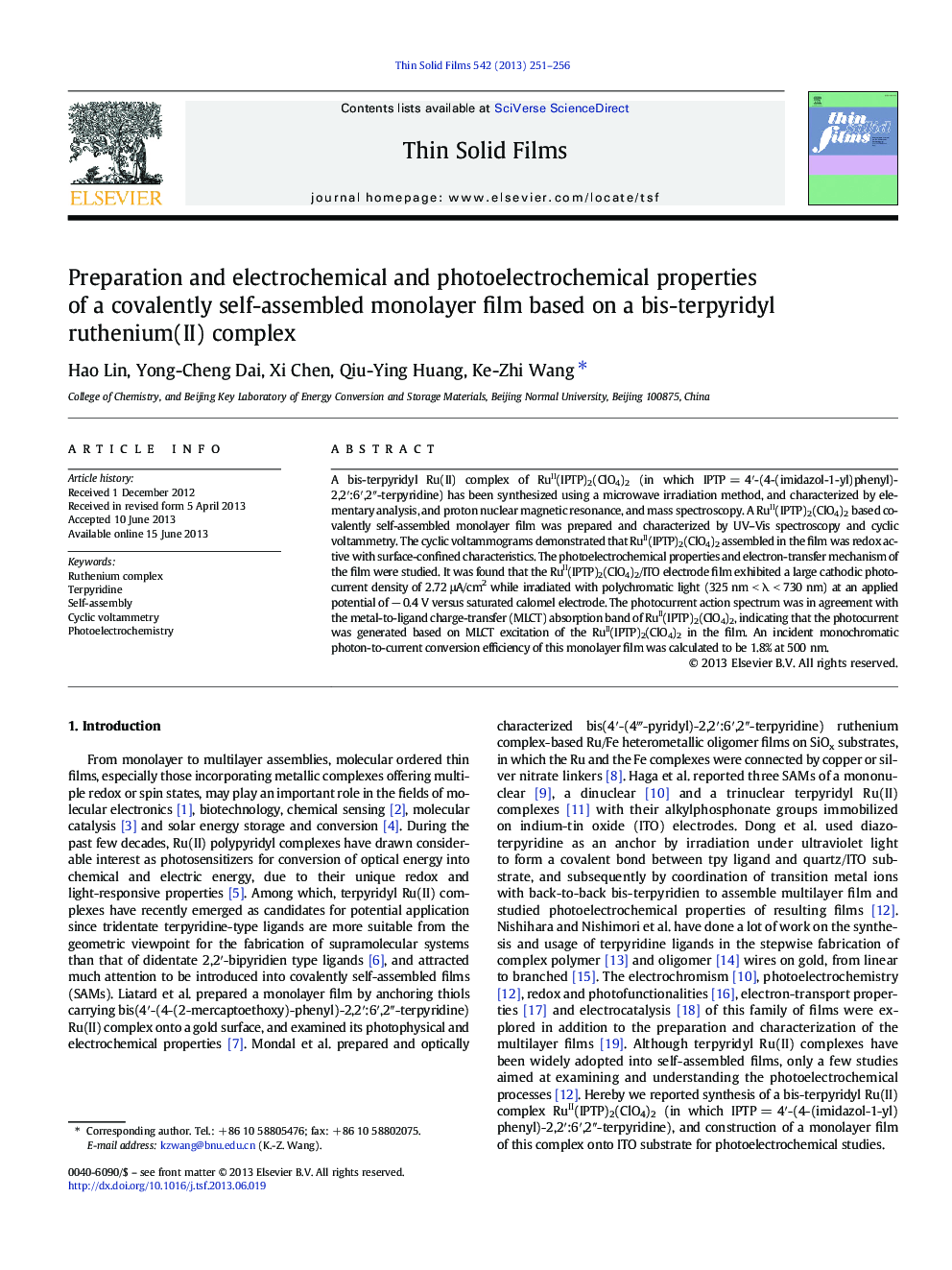| Article ID | Journal | Published Year | Pages | File Type |
|---|---|---|---|---|
| 8036484 | Thin Solid Films | 2013 | 6 Pages |
Abstract
A bis-terpyridyl Ru(II) complex of RuII(IPTP)2(ClO4)2 (in which IPTP = 4â²-(4-(imidazol-1-yl)phenyl)-2,2â²:6â²,2â³-terpyridine) has been synthesized using a microwave irradiation method, and characterized by elementary analysis, and proton nuclear magnetic resonance, and mass spectroscopy. A RuII(IPTP)2(ClO4)2 based covalently self-assembled monolayer film was prepared and characterized by UV-Vis spectroscopy and cyclic voltammetry. The cyclic voltammograms demonstrated that RuII(IPTP)2(ClO4)2 assembled in the film was redox active with surface-confined characteristics. The photoelectrochemical properties and electron-transfer mechanism of the film were studied. It was found that the RuII(IPTP)2(ClO4)2/ITO electrode film exhibited a large cathodic photocurrent density of 2.72 μA/cm2 while irradiated with polychromatic light (325 nm < λ < 730 nm) at an applied potential of â 0.4 V versus saturated calomel electrode. The photocurrent action spectrum was in agreement with the metal-to-ligand charge-transfer (MLCT) absorption band of RuII(IPTP)2(ClO4)2, indicating that the photocurrent was generated based on MLCT excitation of the RuII(IPTP)2(ClO4)2 in the film. An incident monochromatic photon-to-current conversion efficiency of this monolayer film was calculated to be 1.8% at 500 nm.
Related Topics
Physical Sciences and Engineering
Materials Science
Nanotechnology
Authors
Hao Lin, Yong-Cheng Dai, Xi Chen, Qiu-Ying Huang, Ke-Zhi Wang,
